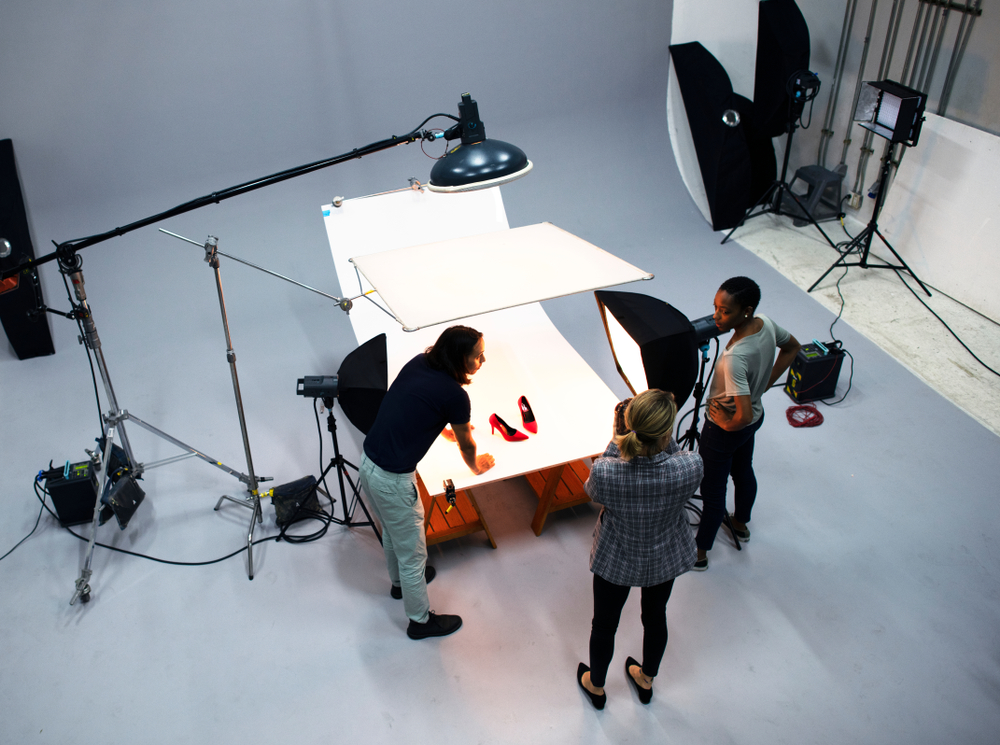
Lawyers’ Love Affair With Billboards
Why Do Personal Injury Lawyers Love Billboards? And Why They Should Rethink Their Strategy
Billboards are everywhere, and if you’ve ever driven down a major highway, you’ve likely noticed a trend—personal injury attorneys dominate this outdated advertising medium. In fact, one could argue that if it weren’t for this particular industry, the entire billboard sector might collapse. But why do lawyers cling so tightly to billboards? Is it a misguided attempt at brand recognition, or just an ego-driven need to see their own faces plastered across the skyline?
The Appeal of Billboards for Personal Injury Attorneys
1. The Visibility Factor (Even If It’s Ineffective)
Law firms that invest in billboards believe that sheer exposure will lead to business. But visibility doesn’t equal engagement. A driver speeding down the highway at 70 mph has mere seconds to register an attorney’s name and phone number, and the chances of that driver immediately needing legal representation at that moment? Almost zero.
2. Ego Over Strategy
Many lawyers love seeing their own faces on billboards, as if their larger-than-life presence alone will inspire trust. But advertising should be about connecting with clients, not fulfilling a personal need for recognition. Consumers don’t hire attorneys because they’ve seen the same headshot 50 times on their daily commute—they hire based on trust, reputation, and credibility.
3. Lackluster Creativity
Legal billboards are infamous for their uninspired creative. Whether it’s a serious-looking attorney with crossed arms and a phone number in massive font, a particular Tampa lawyer harkening back to his good old days at college in EVERY SINGLE AD (even though it was probably more then 30 years ago), or a cringeworthy pun, the result is the same: forgettable. The best advertising evokes emotion and action—billboards for attorneys, on the other hand, rarely achieve either.
The Bigger Problem: Outdated Advertising and Neglected Digital Presence
While lawyers continue to dump money into billboards, many of their websites remain outdated, slow, and difficult to navigate. A poorly designed website sends a clear message to potential clients: If you don’t care about your own digital presence, how much will you care about their case?
Smarter Advertising Strategies for Attorneys
Rather than burning cash on overpriced, ineffective billboards, law firms should focus on data-driven digital marketing strategies that actually generate leads and build long-term brand authority:
- Google Search Ads & Local Service Ads – When people need a lawyer, they don’t scan billboards. They Google it. Investing in Google Local Service Ads ensures that law firms appear when and where potential clients are actively searching.
- SEO & Content Marketing – A professionally designed website with well-optimized legal content helps law firms rank higher on search engines and establish authority.
- Social Media & Video Marketing – Personal injury attorneys should leverage YouTube Video Ads and social media platforms to connect with potential clients in a more engaging, memorable way.
- Retargeting & Email Campaigns – Digital advertising allows law firms to re-engage potential clients who have visited their website but haven’t taken action.
Conclusion: Stop Wasting Money, Start Building a Better Brand
Personal injury attorneys have relied on billboards for far too long, but in today’s digital-first world, that approach is inefficient, outdated, and costly. Instead of pouring money into roadside ads with uninspired creative and minimal engagement, law firms should invest in smarter, measurable marketing strategies.
At Mad Men Marketing, we specialize in creating customized digital marketing strategies that actually convert leads into clients. Don’t waste your budget on billboards—contact us today and let us help you build a brand that truly stands out.

How to Properly Light a Stationary Subject for Video and Photo Production
In the world of advertising and marketing, high-quality visuals are paramount. Proper lighting can make all the difference, whether you’re shooting a commercial, creating content for social media, or photographing products for a catalog. Here’s a comprehensive guide on how to properly light a stationary subject for video and photo production.
Understand the Basics of Lighting
Before diving into specific techniques, it’s essential to understand the fundamentals of lighting:
- Intensity: The brightness of the light.
- Color Temperature: Measured in Kelvin (K), this describes the color of the light. Daylight with a clear sky is between 5000K-6500K, while tungsten lights are around 2500K-3500K.
- Direction: The angle at which light hits your subject affects shadows and highlights.
- Quality: Refers to how hard or soft the light is. Hard light creates sharp shadows, while soft light produces a gentle transition between light and shadow.
Use Three-Point Lighting
Three-point lighting is a standard method used in video and photo production. It involves three primary light sources:
- Key Light: The main light that shines directly on the subject, providing most of the illumination and defining the subject’s shape.
- Fill Light: A secondary light placed opposite the key light to fill in shadows created by the key light, ensuring the subject is evenly lit.
- Back Light (or Rim Light): Placed behind the subject, this light helps to separate the subject from the background, adding depth and dimension.
Choose the Right Equipment
Selecting the appropriate lighting equipment is crucial:
- LED Lights: Energy-efficient and versatile, LEDs allow you to adjust both intensity and color temperature.
- Softboxes: These diffuse light, creating a soft, even illumination that’s ideal for reducing harsh shadows.
- Reflectors: Use these to bounce light onto your subject, filling in shadows without the need for additional light sources.
- Light Stands and Clamps: Ensure your lights are securely positioned and easily adjustable.
Positioning Your Lights
Proper positioning of your lights is key to achieving the desired effect:
- Key Light: Position it at a 45-degree angle to the subject’s front and above eye level to create natural-looking shadows.
- Fill Light: Place it opposite the key light, at about the same height, but at a lower intensity to avoid creating competing shadows.
- Back Light: Set it up behind the subject, elevated, and angled towards their back. This light should be subtle but enough to outline the subject.
Control Your Environment
The environment in which you’re shooting also plays a significant role:
- Background: Choose a background that complements your subject. Keep it simple to avoid distractions.
- Ambient Light: Be aware of ambient light sources such as windows. To maintain control over your lighting setup, you might need to block or diffuse natural light.
- Color and Reflective Surfaces: Consider the colors and surfaces in your shooting area. Bright or reflective surfaces can bounce light unpredictably, affecting your setup.
Adjusting for Different Subjects
Different subjects require different lighting approaches:
- People: Soft, even lighting is generally more flattering. Use softboxes or umbrellas to diffuse the light.
- Products: Highlight the product’s features with harder light to create defined shadows and emphasize textures.
- Large Objects: Ensure even lighting across the entire object. To achieve this, you may need multiple key and fill lights.
Test and Adjust
Always test your setup before the actual shoot:
- Take Test Shots: Capture test images or footage and review them to check for unwanted shadows, hot spots, or color imbalances.
- Make Adjustments: Don’t be afraid to move lights, adjust intensity, or add diffusion materials until you achieve the desired look.
Proper lighting is an art that requires practice and experimentation. By understanding the basics, using the right equipment, and carefully positioning your lights, you can create visually stunning content that beautifully highlights your subject. Remember, the key to mastering lighting is to keep testing and adjusting until you achieve the perfect shot. Happy shooting!
Ready to take your video and photo production to the next level? Contact us today to learn more about how our expert team can help you create stunning visuals for your brand!

Kia’s Confusing Logo
When it comes to design, the importance of typography can’t be overstated. It can contribute to brand recognition, info hierarchy, and overall legibility.
For those who aren’t familiar with the term “typography”, it’s the strategic arrangement of type in order to make written language readable and visually appealing. In graphic design, typography’s two main purposes are to:
- Communicate a message
- Promote legibility
If one’s typography is failing in either of these objectives, it can greatly affect the desired response from the intended target audience.
Anyone in the field of design or marketing understands how important brand recognition is, and car companies are among the most recognizable in the world. In early 2021, Kia noticed that companies like Nissan, Volkswagen, BMW, and GM were all rebranding and decided to hop on the bandwagon. Their solution to an outdated and juvenile logo was to design something bold, stylized, and immediately recognizable.
They succeeded in all of those and still, unfortunately, missed the mark.
The shortcoming stems from the legibility of the logo, which is lost due to how the company decided to connect the K and the I to the A in the middle of the name. One could argue that the legibility here is a matter of opinion and that the logo clearly reads KIA, but you can’t argue with Google Analytics.
According to Google, over thirty thousand people a day Google the letters KN, thinking that the stylized logo is portraying a backward N instead of an I and A.


While the new KIA logo isn’t the worst logo taboo we’ve seen before, it is a detrimental one and has clearly been confusing drivers since it was unveiled. Here at Mad Men Marketing, we understand how important it is to have a brand logo that not only speaks to you and your business but is legible and above all, effective.

5 Insights on Intellectual Property
Most of us, at one point or another, have seen those small encircled letters accompanying a logo or design. Well, that letter is a symbol denoting one’s intellectual property. Intellectual property, or IP, is something one creatively contrives. This could be a work of art, a tagline, a logo, or an invention. There are five types of IP that are most commonly used.
-
Copyright
A copyright is one of the most commonly used types of intellectual property, which protects the original work of the creator. This covers a wide spectrum of mediums including paintings, illustrations, photos, music, apps, books, movies, and much more. This isn’t something you need to apply for, it’s something you obtain automatically. You can do this by marking your work with the © symbol. This will legally protect your work from people copying it, redistributing it for free or for profit, making adaptations of your work, or displaying your work publicly.
-
Trademark
A trademark is simply any symbol, design, or phrase that’s used to identify a service or goods coming from a specific source. There are two categories of trademarks: registered and unregistered. Both of these trademarks are protected by law, but federally registered trademarks have a wider range of protection. You can trademark copy, audio, colors, smells, motion graphics, logos, and much more. Trademarks are protected for up to 10 years.
-
Trade Secrets
Have you ever wondered what the Colonel’s secret fried chicken recipe is? I bet you have, but unfortunately for us, that’s a trade secret. A trade secret is a piece of information that the owner classifies as legally confidential. This includes a broad range of information, including info that gives its owner a competitive advantage due to its limited availability to the public.
-
Design Rights
A design right protects key attributes of a product or article that are specific to its identity or appearance. Design rights are applied to a variety of products such as home goods, handcrafted items, containers, furniture, jewelry, electronic devices, and much more. A great example of this would be a Dyson vacuum. Both the technology and design are protected so the structure, aesthetic, and functionality are all unique to that company.
-
Patents
Have you ever had a great idea for a product, just to realize that someone has already beat you to it and patented it? The patent can prevent you from coming out with a product closely mimicking another because it protects and registers inventions and makes it illegal for anyone to make or sell the said invention without the owner’s consent. The invention must be new, inventive, and have industrial applicability.
It’s very important to know which of these specific types of intellectual property apply to you and your product, service, design, or invention. Being diligent about something like your company name or logo ahead of time can save you a lot of trouble down the road, so remember to always protect your work!

7 tips on taking better photos for social media
There are several different components that make up a successful social media page, but one of the most important is quality imagery. As a marketing agency, social media can be one of the best places to engage our audience. That’s why we understand the importance of a great photo.
We don’t need expensive cameras to take quality photos. Our cell phones can take such high-quality photos, and most people can’t tell if they are taken with a phone or professional photography equipment. The camera can’t do all the work, though.
There are a few key tips to keep in mind while you’re trying to capture that Kodak moment.
#1 — Light it Right
Lighting is one of the most important tools you can utilize when taking photos. An easy tip to remember is to ensure your subject isn’t backlit, and that the light is shining down on it directly or coming at it from an upper-diagonal angle. If the light hits it from the back, you’ll be left with a dark, indiscernible green smoothie bowl, which is social media blasphemy.
You can combat this in a few ways:
- The first way is to make sure your light source is coming from behind you (facing the subject).
- You can also take the photo in HDR mode.
- The third option is to fix it in post-production.
#2 — Shoot in HDR Mode
HDR stands for High Dynamic Range. In HDR mode, the camera will typically take two, three, or more photos at different exposures in quick succession, and then blend them together into one image with detail in both highlights and shadow.
Smartphone cameras that have the HDR feature usually offer the option to switch the HDR setting to On, Off, or to set it to Auto-HDR. Having HDR set to “On” tells your phone to capture a high dynamic range image every time a photo is taken.
#3 — Understand Depth of Field
Creating depth of field with your phone camera is a really cool way to up your Instagram photo game. When you’re shooting, always take into consideration the foreground, middle ground, and background in relation to the subject of the photo.
Let’s say you’re taking a picture of a subject some distance away from you and you want the subject in focus and the background blurry — simply tap your subject and wait for a yellow square to appear. Shooting in portrait mode on your phone is a great way to effectively highlight the depth of field, too.
#4 — Learn the Rule of Thirds
Rule of thirds, also known as the golden grid rule, is a technique where a composition is aligned to a three-by-three grid.
By dividing a composition into three grids, we section it into nine imaginary rectangles with four intersections. The focus subject is aligned at one of the intersecting points or close to them. This creates an asymmetry in the composition.
In Settings, tap Camera, and then enable the Grid option. That’s all you have to do to turn the feature on! Your next step is to apply the concept: remember to put important things along the lines.
#5 — Have Fun With Camera Angles
Playing with unique angles can help your photos stand out and offer you a variety of options to choose from when it comes time to post. Angles can create the illusion of depth and height, making your images more interesting to look at, thereby generating more views.
TIP: Try lowering the angle to create a new perspective instead of shooting straight down.
#6 — Use Negative Space Appropriately
Negative space is the area surrounding the main subject in a photograph that is left unoccupied. Basically, it’s the space around the subject that helps define the positive space (or main focus).
Leaving a large amount of negative space in the photo can emphasize scale and simplicity, but make sure you are using it correctly.
TIP: If you’re trying to highlight the subject in the photo, make sure you’re taking the photo close up and filling the frame with the subject. This will reduce the surrounding negative space.
#7 — Tasteful Phone Editing
We could break down each category of editing you can utilize on your phone, but for simplicity’s sake, we want to highlight the three tools that can really elevate your photo:
- Brightness: It’s always a safe bet to bump up the brightness a bit unless your photo is already over-exposed. Indoor lighting rarely provides you with adequate illumination for a decent photo.
- Contrast: Adjusting the contrast ever so slightly helps to make the darks darker and the lights lighter. This can help your image appear less “flat.”
- Saturation: Delicately increasing the saturation will help to bring out some of those vivid colors that poor lightning may have counterbalanced. Make sure to not overdo this one or you will end up with some radioactive colors.
With over 4.6 billion people around the world using social media, online engagement is higher than ever. That is why it is so important to have content that is not only engaging but aesthetically pleasing. Take each one of these tips into consideration the next time you are taking a photo with the intention to post and you’ll look like a pro in no time.
And the Mad Men Marketing production crews are always ready to step in and help elevate your content for you! So, are you ready to interact? If so, reach out to our team today by calling 904-355-1766!


